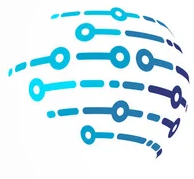Empowering Women Entrepreneurs in India: Bridging the Gap in Access to Finance
Self-employment and entrepreneurship have emerged as vital lifelines for women across India, with nearly three-fourths relying on their own businesses for survival. However, the landscape of women-led enterprises is often characterized by informality and a concentration in traditional, low-growth sectors. This stark contrast to the technology-driven, male-led startups vying for unicorn status highlights the challenges faced by women entrepreneurs in accessing formal financial resources.
The Informal Economy and Its Challenges
The predominance of informal, nano enterprises among women-led businesses poses significant barriers to accessing formal finance. Traditional financial institutions typically assess creditworthiness based on credit history and collateral, which many women lack due to limited land ownership and insufficient networking opportunities. This results in a financing gap of approximately $20.5 billion for women-led enterprises in India. Despite demonstrating higher profit margins—31% compared to 19% for male-owned businesses—women face a rejection rate of 19%, double that of their male counterparts.
The Impact of COVID-19
The COVID-19 pandemic exacerbated existing challenges, particularly for women-led enterprises concentrated in sectors like textiles, retail, food processing, and hospitality. A survey conducted in July 2020 revealed that 88% of women-led MSMEs relied on personal savings to meet working capital needs. Consultations by Nikore Associates indicated that many women entrepreneurs were unaware of government support for MSMEs, leaving them vulnerable during the crisis. Even those in self-help groups faced severe working capital constraints, unable to access affordable credit from public or private banks.
The Gender Digital Divide
The gender digital divide further complicates the situation. In India, women are 15% less likely to own a mobile phone and 33% less likely to use mobile internet. Even when women have access to devices, their usage is often monitored by male relatives, limiting their ability to leverage technology for business purposes. Alarmingly, nearly 98% of women-led own-account enterprises do not use computers, and less than 2% utilize internet facilities. Many women entrepreneurs report using platforms like WhatsApp for personal communication but have not considered them for business applications.
Opportunities in Fintech
Despite these challenges, the rise of digital lending through fintech platforms presents a unique opportunity to meet the credit needs of women-led enterprises. Innovative companies like MoneyTap, FlexiLoans, and SBI e-Smart SME have developed online marketplaces that offer customized, small-sized loans. These platforms cater to MSMEs lacking extensive credit histories or collateral, making them ideal for women entrepreneurs.
However, attracting women-led enterprises remains a challenge for fintech lenders. With nearly 99% of women-owned MSMEs classified as micro and informal, awareness levels are low, particularly in rural areas. An analysis of loan disbursement data from various lending platforms reveals a significant skew towards young, male graduates, with only 10% of borrowers being women. This disparity is compounded by the need for a certain level of digital literacy and comfort with technology, which many women entrepreneurs lack.
Government Initiatives and Support
Recent government initiatives and efforts from the financial services industry position India favorably to address gender gaps in access to finance through fintech. The PM Jan Dhan Yojana has significantly reduced the gender gap in bank account ownership, from 20 percentage points in 2014 to just 6 percentage points in 2017. Furthermore, India ranks fourth globally for female-founded fintech firms, with nearly one-fifth of these companies having a female CEO or founder.
To capitalize on this momentum, sustained efforts are needed to bridge the gender digital divide. The Central government could expand the PMGDISHA scheme to include gender targets, while state governments might devise complementary schemes to enhance digital literacy among women and girls. Training programs could be implemented to facilitate digital adoption among small businesses, particularly those led by women.
Strategies for Fintech Firms
Fintech firms must recognize the business case for investing in women entrepreneurs. Global studies indicate that women customers represent a more profitable and scalable segment for fintechs, with higher repayment rates and loyalty. However, to build trust among women-led enterprises, fintechs can adopt several strategies:
-
Lower Interest Rates: Offering special incentives and schemes for women entrepreneurs can make financial products more accessible. Examples include group loans at low-interest rates and collateral-free loans.
-
Alternative Risk Assessment Mechanisms: Utilizing proxy data and indicators to assess creditworthiness can help fintechs better serve women entrepreneurs. For instance, some firms aggregate extensive data points to create customized credit scores.
-
Support for Credit Applications: Providing resources to help women entrepreneurs improve their loan applications can enhance their chances of securing funding. Initiatives like digital communities can facilitate learning and support.
-
Collect Gender-Disaggregated Data: Understanding the specific needs of women entrepreneurs can lead to tailored financial products that better serve this demographic.
- Sector-Specific Loan Products: Developing loan products tailored to sectors with a higher concentration of women-led enterprises can enhance accessibility and relevance.
The Path Forward
The fintech industry is on the brink of exponential growth, with the potential to be gender-inclusive. A collaborative approach involving government initiatives and corporate action can create a more equitable financial landscape for women entrepreneurs in India. By addressing the barriers to access and fostering an environment conducive to growth, we can empower women-led enterprises to thrive in the digital age.

